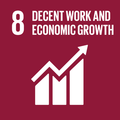Digital Matatus uses cellphone technology to map informal public transport routes in developing countries and shares this data at no cost to help improve citizen services.
Using cell phone technology, Digital Matatus has collected detailed information on the 3,000 stops of the 130 routes that make up Nairobi’s informal public transport system. The data has been translated into physical and digital maps and uploaded to Google Maps, making it the first informal transit system searchable in Google Transit.
Making this data understandable enables riders to take more efficient, better-planned journeys, whilst allowing city officials to better manage road networks, maintenance schedules and traffic congestion. These usage and planning improvements are crucial for a well-functioning and efficient urban transit network. After its successful run in Nairobi, Digital Matatus plans to expand to other fast-growing cities in the developing world.
Digital Matatus illustrates how anyone can leverage mobile technology in developing countries to collect data on essential infrastructure.
Sarah Williams – Co-Founder, Digital Matatus
Why you should care
In 2014, 40% of Africa’s population lived in urban areas, and by 2050 this figure will rise to 56%. Such rapid urbanization will require efficient urban transportation systems. By mapping informal transit routes and sharing this information openly, Digital Matatus makes it easier for residents and city officials alike to better navigate and manage urban transportation networks and traffic flows.
How the Global Goals are addressed

Decent Work and Economic Growth
Mapping the routes and stops of the chaotic matatu system improves overall public transport efficiency for users, driving city-wide economic growth.

Sustainable Cities and Communities
Digital Matatus provides valuable data to cities that are busy developing or improving their formal public transport systems, helping to make public transport, formal and informal, more efficient.

